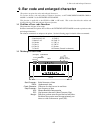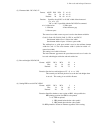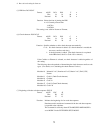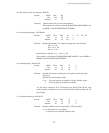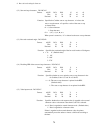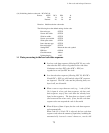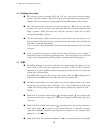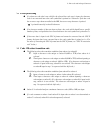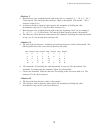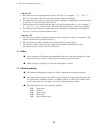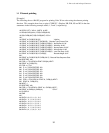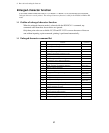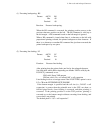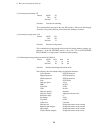
❏ Error processing
●
If a character code that is not valid for the selected bar code type is input, the character
code is not converted into a bar code symbol but is printed as a character. If the bar code
has a start or stop character added to the HRI, the start or stop character is printed.
‘ ’ is printed instead of an invalid character.
●
If an incorrect number of data are input to form a bar code which should have a specific
number of data, are input data is not converted into a bar code symbol but is printed as is.
●
If incorrect data is input in the UPC-A format and cannot be converted into the UPC-E
format, the input data is not converted into a bar code symbol but is printed as is. (For
the rules of converting the UPC-A format into the UPC-E format, see “UPC-E conversion
rule” below.)
❏ Code 128 subset transition rule
●
The following shows the transition conditions from subset A to subset B.
1. Input a character code unique to subset B (60H to 7FH) when subset A is
selected.
2. Then input a character code unique to subset B (60H to 7FH) without inputting a
character code unique to subset A (00H to 1FH). (If a character code unique to
subset A is input in this step, subset B is not selected. The character code unique
to subset B input in step 1 is expressed with the shift code.)
●
The following shows the transition conditions from subset B to subset A.
1. Input a character code unique to subset A when subset B is selected.
2. Then input a character code unique to subset A without inputting a character
code unique to subset B. (If a character code unique to subset B is input in this
step, subset A is not selected. The character code unique to subset A input in
step 1 is expressed with the shift code.)
●
Subset C is selected when four continuous character codes (30H to 39H) are input.
●
If a code common to subset A and subset B is input when a subset is not determined or
subset C is selected, subset B is selected temporarily selected.
77
9. Bar code and enlarged character



